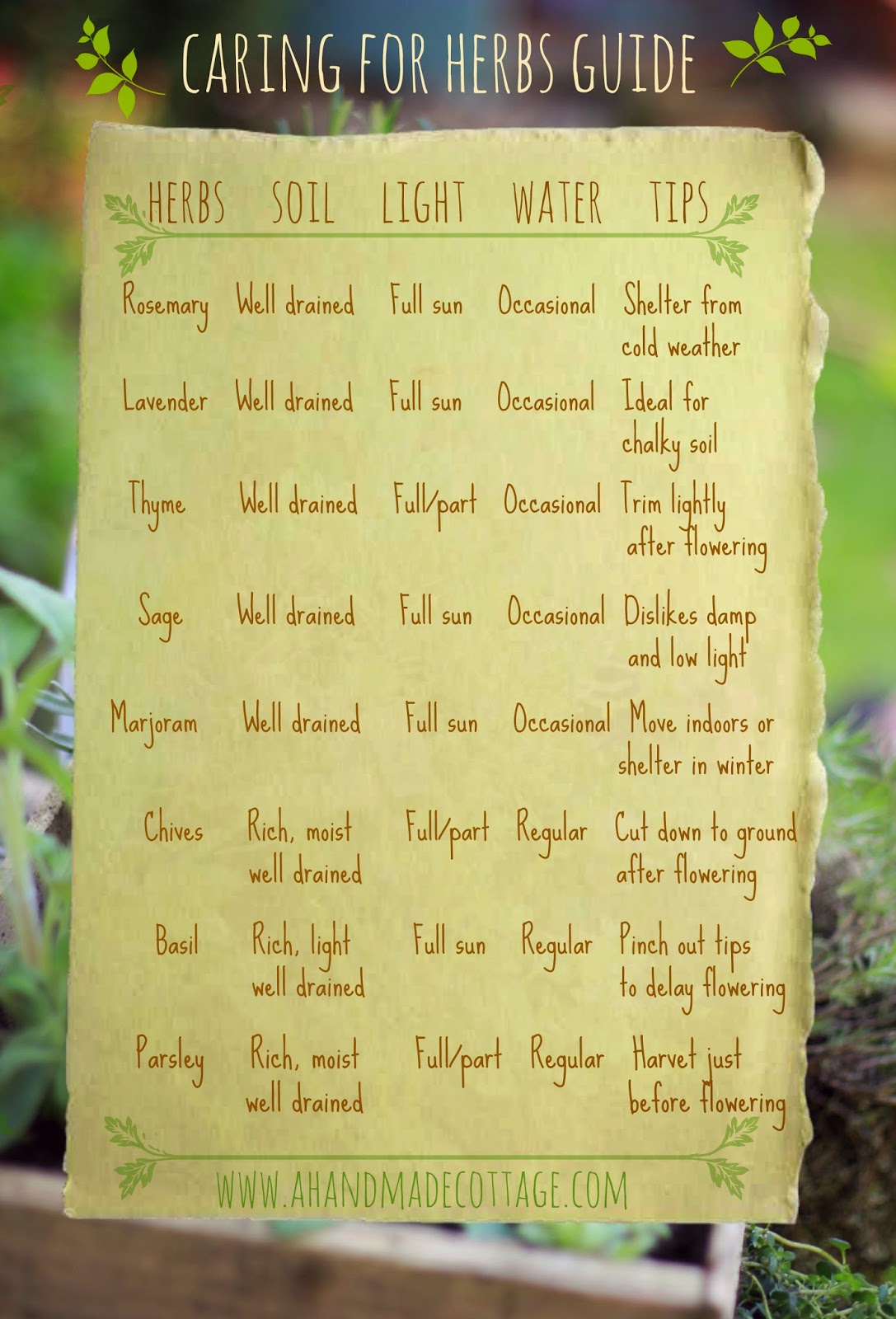Last year I made this beautiful herb box ... it was filled with my favourite herbs: Lavender, Rosemary, Thyme and Sage. I used a good compost, positioned it in full light and I watered and fed correctly and yet despite my best efforts ... it met a sorry end. Mrs Miggins next door has magic fingers and can grow anything, she will break off a twig from a rose bush (from a neighbours garden or nearby stately home) pop it in a pot and as if like magic it will flourish from her touch. So after some 'digging' about and 'leafing' through books (ok, ok I'll stop now) I have now seen the error of my ways, and the answer lies in the soil ... get the soil right, and you can grow anything. So here is my AHC guide to growing herbs, which includes a pretty downloadable chart for your garden shed wall!
The right soil for the right plant
Soil has never been high of my agenda as a gardener, I was always more of a "buy a pretty plant and stick it in" kinda gal, but I see now that soil is everything ... and you stand to waste less time and money if you start off by getting that right. There are several types of soil: sandy soil, clay soil, loamy soil, chalky soil, silty and peaty, and different plants like different soils. It turns out, herbs like Rosemary and Lavender are native to the Mediterranean region, so they like sandy, gritty, well drained soils, which explains the death of my plants, as I had planted them in quite heavy, clay soil. They also don't like peat in their soil, which is often found in multi-purpose compost. Good drainage is vital for these herbs because if they become waterlogged, they will rot. So if you have a heavy, dense clay-type soil you will need to improve it by adding other elements ... a mix of peat-free compost and the same volume of sharp sand or grit (not builder sand) mixed together is ideal for Mediterranean herbs, as this will help water drain more easily.
How and when to water a plant.
Water is vital to plants as we know, but too much or too little can quickly kill a plant. One way to test if a plant needs watering is: press the back of your hand onto the soil surface, if it feels cold it has plenty, and will not be ready for more water. If it feels warm, it is drying out. Alternatively stick a finger into the soil, if it feels dry, water it. As mentioned before, many herbs are from the Mediterranean region, so they are used to dry conditions, and it can get tricky trying to figure out what to water and when, so one way to make like easier is for yourself is to group certain plants together in the garden ... Rosemary, Thyme, Sage and Oregano all like well drained poor soil and a regular but light watering. While Parsley, Basil and Chives like a richer, more moist soil. Grouping plants like this together will help you remember their habits more easily. Always water in the morning if possible.
Feeding your plants.
Feeding your herbs plant is also vital to it's well being especially if it's in a pot. Once your herbs are established keep them thriving with a compost tea, or a light, all purpose fertiliser - ideally an organic seaweed-based feed. Do this weekly from March to September and it will keep your plants healthy and promotes lots of lovely leafy growth. TIP: Make a note in your diary or set an alarm on your phone to remind you).
Light or shade
Most herbs are at their happiest in full sun. Put a sun-loving plant in the shade and it will soon become pale and brittle, as mine did. There are some herbs, like Chives, Parsley and Mint which don't mind partial shade though, where as Basil will simply not tolerate it. This is often a trial and error thing, watch your plant closely and it will soon tell you if it's not happy.
Pruning & harvesting your herbs.
Pruning is vital to a herbs well being. We use them regularly and pruning encourages new growth. If you don't prune a herb it will become thin and leggy, not fat and bushy. By pruning / harvesting regularly we are keeping the plant in it's 'growing' stage for as long as possible. Herbs grow lovely flowers, and many are edible but once they begin to flower it means they are nearing the end of it's growing cycle, so regular harvesting will ensure it doesn't flower too early, and if so see a flower forming, simply pinch it off.
The AHC guide to growing herbs chart
Click here for your free downloadable wall chart

Happy herbing!
JM x







Gorgeous and useful wall chart! I love your videos and the blog! Big Big thanks!
ReplyDeleteI have just planted several pots of herbs and a lavender plant in the ground. We shall see...very helpful info, Jodie! Thank you!!
ReplyDelete